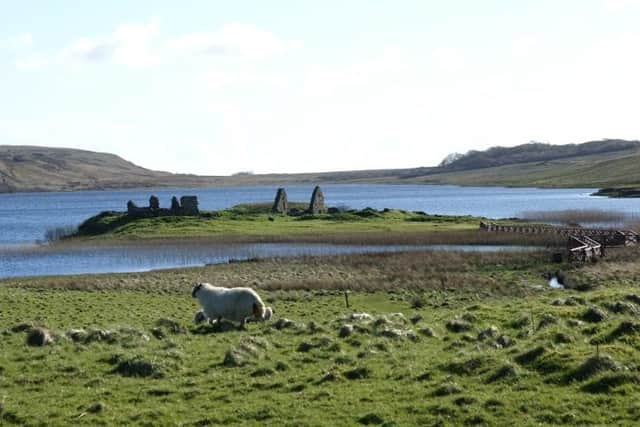Ancient powerbase of Lords of the Isles in Scotland was home to 'thriving community'
Analysis of sediments taken from Finlaggan Loch on Islay has revealed detailed information about human activity around the powerbase for the first time and illuminates life during the rule of Somerled, the Norse-Gaelic earl regarded as first Lord of the Isles and who controlled a large part of the islands, Argyll and the Isle of Man.
Sedimentary ancient DNA (sedaDNA) taken by Professor Tony Brown, a geoarchaeologist at the University of Southampton and the University of Tromsø in Norway, has revealed the plants and animals that populated the landscape from around 1,000 years ago.


Advertisement
Hide AdAdvertisement
Hide AdProf Brown described Finlaggan like a “capital settlement” where a significant population farmed the land, with evidence of berries, crops, cows, goats and sheep found.
He said: “The analysis tells us this was a significant centre of population and agricultural activity that might have been supporting the wider area of the island.
“The archaeology is OK for building history and you can match that to documentary records, such as who was the laird, or in this case who was the Lord of the Isles, but it doesn’t really tell you about what the site was used for and the human activity there.
"From what we know now, it’s got to be much more than a centre for a kingly population. I think it is much more than that. It’s thriving, it’s a capital settlement.”
Traces of prunus – either cherries, sloe or blackthorn – oats and probably flax, which could indicate a form of industry, were found from the period that covers the reign of Somerled, who built a castle at Finlaggan in 1138.
Prof Brown said: “It looks almost like a monastic community. We know that the Lords of the Isles regarded themselves as important Christian figures.”
The DNA disappears in 1277, which could reflect a change in activity on the site, Prof Brown said.
The Treaty of Perth, signed in 1266, resulted in Scotland securing sovereignty over the islands, following a financial settlement with Norway.
Advertisement
Hide AdAdvertisement
Hide AdProf Brown said: “If you look after about 1280, there is very little activity at Finlaggan and that fits with Scotland asserting its control. The site goes into immediate inactivity. Perhaps it is even abandoned. It perhaps dies earlier than we have first expected.”
The kingdom rose again under Clan Macdonald, with the Lordship, privy councillors and religious figures gathering on islands in the loch to discuss governance and legal matters of the day.
After the Lordship was seized by the Scottish Crown at the end of the 15th century, activity at Finlaggan again dies away with traces of potato showing up in the 18th century.
Sedimentary ancient DNA (sedaDNA) is analysed using PCR testing like that used to detect coronavirus, Prof Brown said.
He said research had been delayed as chemicals and some lab equipment could not be sourced given the pressures on supply due to the pandemic.
The Finlaggan analysis comes as part of research into changing landscapes, environment and population on islands in the Sea of Moyle over the last three millennia. Colonsay, Mull, Iona, Lismore and Gigha are also being surveyed in Scotland.
A message from the Editor:Thank you for reading this article. We're more reliant on your support than ever as the shift in consumer habits brought about by Coronavirus impacts our advertisers.
If you haven't already, please consider supporting our trusted, fact-checked journalism by taking out a digital subscription.
Comments
Want to join the conversation? Please or to comment on this article.
